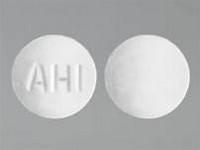Betaxolol hydrochloride

Betaxolol hydrochloride
CLINICAL USE
HyperlipidaemiaDOSE IN NORMAL RENAL FUNCTION
200 mg, 3 times a day Modified release: 400 mg dailyPHARMACOKINETICS
DOSE IN RENAL IMPAIRMENT
GFR (mL/MIN)
40–60 400 mg daily15–40 200 mg every 24–48 hours<15 AvoidDOSE IN PATIENTS UNDERGOING RENAL REPLACEMENT THERAPIES
IMPORTANT DRUG INTERACTIONS
Potentially hazardous interactions with other drugsAntibacterials: increased risk of myopathy with daptomycin – try to avoid concomitant useAnticoagulants: enhances effect of coumarins and phenindione; dose of anticoagulant should be reduced by up to 50% and adjusted by monitoring INRAntidiabetics: may improve glucose tolerance and have an additive effect with insulin or sulphonylureasCiclosporin: may increase nephrotoxicity and reduce ciclosporin levelsLipid-regulating drugs: increased risk of myopathy in combination with statins and ezetimibe – avoid with ezetimibe; do not exceed 10 mg of simvastatin1ADMINISTRATION
Reconstition
–Route
OralRate of Administration
–Comments
–OTHER INFORMATION
Take dose with or after food Contraindicated in nephrotic syndrome There should be an interval of 2 hours between intake of ion exchange resin and bezafibrateModified-release preparation is not appropriate in renal impairment
See how to identify renal failure stages according to GFR calculation
See how to diagnose irreversible renal disease
Home








